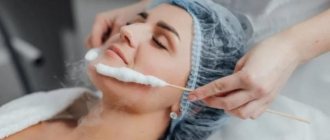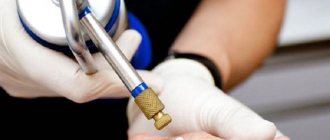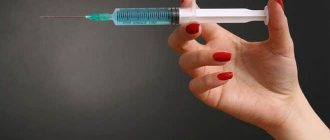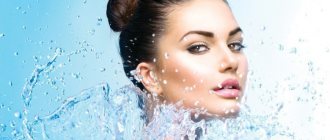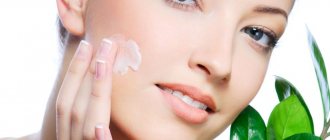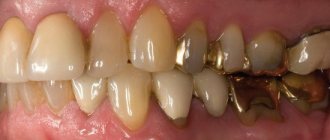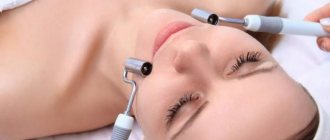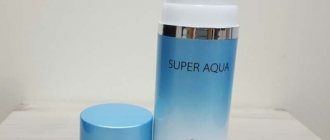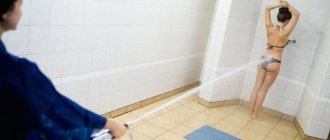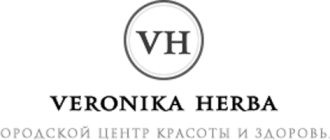Cryomassage is one of the methods of massage on the human body, during which a cold source is used. Cryomassage refers to procedures using moderately low temperatures, usually not lower than -20 degrees Celsius. The essence of the method is local indirect contact of the skin with a source of cold, most often with a device that produces liquid nitrogen, due to which the metabolic processes, consumption and transport of nutrients first slow down in the tissues, and then they are actively restored. Doctors and cosmetologists note that cryomassage has both cosmetic and therapeutic effects on the body.
What is facial cryomassage
Cryomassage is a technique that uses liquid nitrogen at a temperature of −196 degrees Celsius to provide anti-inflammatory and analgesic effects on the skin. The cosmetic procedure is almost painless; due to the action of nitrogen, blood vessels immediately expand and contract. The processes lead to rejuvenation of the skin, normalizing blood flow and renewing epidermal cells. Cryomassage of the face with liquid nitrogen does not cause severe discomfort, only a slight tingling sensation and a gradual increase in warmth.
History of cryomassage with liquid nitrogen
The analgesic effect of cold on injured areas of the body was known back in the days of Ancient Egypt. Doctors of that time used cold compresses to relieve pain from various fractures and bruises, as well as to relieve swelling. Over time, the beneficial properties of cold were developed by Hippocrates, Galen, and Avicenna in their medical works. All of them noted the healing effects of cold on the human body. The term “cryotherapy” was introduced into use in the 20th century by the German priest Sebastian Kneipp, taking as a basis the Greek “krios” - cold, cold. Kneipp developed cryotherapy into a separate method of treatment in physiotherapy, and used cold for diseases of the musculoskeletal system. But Japanese professor Toshimo Yamauchi went the furthest, who in 1984 developed and improved a unique massage technique. He began to use the possibilities of cryotherapy in the treatment of joints and the treatment of benign skin tumors.
Like a medical procedure
Cryomassage can be prescribed to the patient by a dermatologist, orthopedist or doctor of another specialization. The fact is that combining manual therapy with tissue freezing helps eliminate the symptoms of many diseases. The therapeutic benefits of the procedure are recognized by many scientists.
Indications:
- Muscle pathologies. These may be inflammatory reactions accompanied by chronic pain.
- Vascular diseases. Stagnation of venous blood and lack of blood supply lead to pain and muscle weakness.
- Displacement of vertebrae and pinched nerves. Such pathologies are also accompanied by pain and limitation of movements.
- Vascular pathology of the skin, manifested by swelling, redness and rashes (rosacea).
- Diseases of adipose tissue. In this case, the growth of subcutaneous tissue is possible.
- Chronic skin infection.
Cryomassage courses for pathologies of soft tissues and bones can be carried out several times a month.
Cold work in cosmetology
In modern medicine, the method of cryotherapy has become widely used both for the treatment of emerging diseases and for prevention and strengthening of the body. Depending on the method of treatment, it is applied either to the entire body or to the necessary areas. Directly in cosmetology, it “works” only locally: the face, décolleté, hairline, or is used in anti-cellulite courses. When applied topically, for a cosmetological, rejuvenating effect, cryotherapy works due to the body’s natural reaction to low temperatures, the so-called process of dermacryophoesis.
With short-term exposure to cold during a session, the vessels sharply narrow or, conversely, expand, involving previously “dormant” reserve capillaries in the process.
The consequences of such actions are a strong blood flow, gradual saturation of tissues with oxygen (oxygenation) and strengthening of processes: metabolic, immune and nutritional. Oxygenation of the skin has a long-term effect; over the next few days after the procedure, the tissue will receive nutrition. The cryoprocedure also has a peeling effect. The skin begins to renew itself, and the upper layer of the epidermis gradually exfoliates, the production of collagen and elastin increases for the formation of new cells. Cold in skin care is also used when massaging the face with spoons. This technique involves manipulating hot and cold spoons.
Side effects and complications after cryotherapy
Their occurrence and severity depend on the depth of freezing, the location and size of the treated lesion.
Complications after cryotherapy are divided into:
- immediate;
- early;
- late;
- permanent.
Most direct reactions are always occurring phenomena. Their unexpected intensity should be cause for concern.
Immediate complications:
- Pain (17.8%) - can occur with any treatment, even when using the stick method. Re-freezing usually causes less discomfort. The pain intensifies during defrosting and can last up to several hours. It's like an aching ripple. Particularly sensitive areas are: fingertips, nail shafts, soles, ears, helix of the ear, lips and mucous membranes, temporal and frontal areas (due to the ease of irritation of the periosteum);
- Edema (7.9%) is considered a side effect if it affects the tissue surrounding the treated lesion and is negatively assessed by the patient. The area around the eyelids is most susceptible; After treatment of lesions in this area, swelling may appear in the upper cheeks, nose, forehead and front of the scalp. Other vulnerable areas: lips, foreskin, labia, especially small ones. Swelling after cryotherapy procedures is more common in children;
- Bleeding - may occur after cryotherapy with applicators covered by highly perfused vascular or cancerous granuloma nodes. There is also a risk of bleeding when treating lesions that have previously been biopsied or if part of the tumor has been cut before surgery;
- Excessive reaction in the form of blisters - especially painful when the soles are affected;
- Gas penetration into the subcutaneous tissue occurs in exceptional cases when ulcerative tumor foci are frozen by spraying or with a fresh biopsy defect, especially in the lower eyelids. It occurs with a characteristic “crackling” of exfoliating tissues;
- Fainting - most often occurs in young people as a neurovegetative reaction with a drop in blood pressure and increased sweating (especially if the procedure was performed with the patient in a supine or supine position);
- Infection after surgery - the greatest risk of secondary infection occurs in the case of difficult-to-heal ulcers after treatment of lesions located on the lower legs. Prevention of this type of complication involves irrigating the lesions with hydrogen peroxide, applying topical antibiotic dressings, or using antibiotics in general (especially after treating multiple lesions, such as actinic keratoses);
- Feverish reaction.
Feverish reaction
Other rare complications: cardiac arrest, formation of vascular granuloma at the site of freezing, etc.
Early complications:
- Post-inflammatory color changes (0.5%) - appear mainly in people with dark complexions. They may cover the entire freeze field equally or appear as a discolored field border. They are an epidermal symptom - a decrease in the number of melanocytes after cryotherapy is accompanied by their functional hyperactivity. The discoloration disappears after a few months;
- Milia (12%) - some patients have many of them around the perimeter of the freezing field.
Late complications:
- Nerve Damage—Cryosurgical procedures cause reversible impairments of pain, touch, and cold sensation that may persist for several months depending on the location of the affected area. These disorders last the longest and are most pronounced in scars on the trunk and limbs. Motor fibers may also be damaged after treatment at the superficial nerve site. Particular care is required when treating lesions located on the lateral surfaces of the fingers, in the area of the angle of the jaw, in the jaw area, on the lateral parts of the tongue, in the fossa, on the back of the foot. The risk of nerve damage is reduced by using an anesthetic and folding the skin during freezing;
- Vascular granuloma;
- Pseudomalignant scar hyperplasia (1.3%) is a rare phenomenon that usually occurs after treatment of cancerous tumors or ulcers complicated by secondary bacterial infection. At the base of the atrophic scar, a dark red, linear, cohesive, raised body gradually grows, which may resemble a relapse. Places prone to this type of complications are: wings of the nose, upper lip (risk of disfigurement, tightening scar, especially after deep freezing), forehead, bridge of the nose, skin of the sternum, lower eyelid (risk of partial eversion of the eyelid). In exceptional cases, a keloid may form in the scar.
Permanent complications:
- Atrophic scar (2.7%);
- Eversion of the eyelids;
- Alopecia - deeper freezing of changes on the scalp causes persistent alopecia due to the high sensitivity of the hair follicles to low temperatures. Therefore, for cryosurgery it is necessary to carefully select lesions located along the edges of the hair on the forehead and temples, in the eyebrow area and on the skin of the chin in men;
- Color changes (6.9%) - their intensity depends on the duration of freezing. After approximately 6 months, re-pigmentation depends on the migration of melanocytes from the periphery. At this time, it is necessary to apply UV protection measures.
Despite the possible occurrence of the complications described above, cryosurgery still remains the method of choice for the treatment of many diseases in dermatology. Its undoubted advantages:
- relatively low cost of treatment;
- a small percentage of side effects;
- usually does not require anesthesia;
- fast healing;
- very good cosmetic effects;
- the possibility of use in areas that are less accessible to other treatment methods or that are a contraindication to their use;
- the possibility of re-treatment and use in case of ineffectiveness of other treatment methods.
Cryotherapy should be considered as a safe, effective, technically fast and simple method of treatment, allowing the treatment of many dermatoses and a large number of patients in an outpatient setting.
Application and features
After cryomassage, you must strictly follow the further instructions of the cosmetologist.
- It is strictly contraindicated to stay in the sun for a long time for ten days. This entails the appearance of pigmentation and cancels the entire positive effect obtained from the procedure.
- After 10 days, it is advisable to expose yourself to sunlight for a short time, while using sunscreen with a high PH factor.
- In case of redness on the face and pain, you need to use a moisturizer. And at your next visit to the doctor, be sure to warn him about the existing reaction in order to reduce the intensity of the procedure in terms of time and pressure.
- To cleanse your face after cryomassage, you should neglect soap in favor of using lotions and tonics without alcohol.
- If you need to apply makeup during a cryomassage course, it is recommended to use foundation with a dispenser, without using sponges, and touch your face exclusively with clean hands.
Is preparation necessary and how to do it?
Cryotherapy does not require long preparation. It is important not to carry out procedures that injure the skin the day before. You should also not sunbathe to avoid causing hyperpigmentation. It is not recommended to use exfoliants, including superficial ones, before 12 hours.
On the appointed day you should not use decorative cosmetics. You should avoid drinking alcoholic beverages, salty, spicy, and sweet foods that increase the secretion of the sebaceous glands.
When taking medications, you should consult your doctor. Compliance with these conditions is enough to prevent undesirable consequences.
Contraindications
Like any other cosmetic procedure, cryomassage also has certain contraindications that are unacceptable for its implementation. For example, women who experience excessive facial hair growth. Main contraindications:
- Oncology.
- Exacerbation of chronic diseases.
- Epilepsy.
- Mental disorders.
- Allergy to cold.
- Vascular atherosclerosis.
- Wounds and burns.
- Migraine.
- Purulent acne.
- Cuperosis.
- Herpes.
Cryomassage during pregnancy
Given the hormonal changes that occur during pregnancy, you should refrain from performing a massage with nitrogen. Often, the deterioration of the immune system during pregnancy can cause complications and risks.
Requirements for preparing the procedure
Cryomassage can be done not only in the salon, but also at home. However, at home this will be a simplified procedure without nitrogen. Massage with liquid nitrogen is performed only in salons, since there are certain requirements for the procedures.
Although there is no direct contact with the skin, experts recommend avoiding peeling shortly before the session. Coarse abrasive particles damage the upper layers of the epidermis, which increases the risk of discomfort during the application of liquid cold. For the same reason, it is recommended to avoid tanning - both natural and tanning - for a week and a half before the procedure.
Massage requires precise movements and technique from the massage therapist. Liquid nitrogen is carried out over the skin, at a distance of a couple of millimeters. During the session, the specialist works either with one zone or clearly moves along special massage lines.
If not manual, but hardware action is provided, then a special attachment is required. However, the technique differs little: a specialist is still expected to perform precise movements.
Cryomassage technique
You should start cryomassage only after consulting a dermatologist or cosmetologist, who, during a thorough examination of the skin condition, will give his opinion and draw up a diagram of the required course. No special preparation is required before starting the cryomassage course. All you have to do is temporarily exclude scrubs, peels and not use any cosmetics on the day of the procedure. The procedure is performed lying down, the patient is completely covered, leaving only the face and neck, the hair is tucked under a cosmetic cap.
- To prepare the facial skin, wipe it with a special lotion.
- A special swab, which is immersed in liquid nitrogen, is passed along the main or selected lines of the face, with the exception of the perioral area and around the eyes, and a massage is performed with quick movements.
- At the end of the massage, a special cream is applied to the affected areas of the skin. Then let the skin calm down for 30 minutes, then you can go outside.
What are the contraindications and is the effect of the cryomassage procedure noticeable?
After a couple of cryotherapy sessions, a visible result will be noticeable, you will definitely notice a smoother surface of your skin, wrinkles and facial folds will become less noticeable, all sorts of irregularities, roughness and skin defects will begin to disappear, black spots on your face will disappear into oblivion, your skin will gradually become fresher and look younger. All these changes will be possible thanks to the effect of liquid nitrogen on the condition of cells:
- Lightening of skin areas with excessive pigmentation;
- Normalization of the work of sweat and sebaceous glands;
- Activation of various microprocesses;
- Increased muscle tone.
Cryomassage treatment
The number of procedures required for each patient depends on the individual characteristics, type, and condition of the skin. expected result. As a rule, to achieve results, the patient requires an average of 15 sessions. Cryomassage is not performed daily, but with a break of 2-3 days. Duration is 10-12 minutes, depending on the areas being treated.
- purulent rashes - about 20 seconds;
- rosacea - the total duration of the procedure is 4 minutes, of which no more than 10 seconds are allocated for each area;
- acne - 15 seconds for each area;
- removing warts and papillomas takes at least 30 seconds each;
- to get rid of scars, depending on their depth, 4-5 massages are required once a week;
- For aerial cryotherapy of the scalp for seborrhea or baldness, 2-3 courses of 10-20 procedures are required, each lasting 15 minutes. The interval is every other month.
Cryotherapy for acne vulgaris and rosacea
For acne vulgaris and rosacea, pustular, papular and larger cysts are suitable for cryosurgery. Blackheads cannot be treated with cold.
Best results are achieved using the 2-5 second spray method for small and superficial lesions, up to 5-20 seconds for larger cysts. Shallow lesions and cysts on the skin of the torso and chest respond best to treatment.
Using the Spray Method to Treat Acne Vulgaris and Rosacea
The same thing happens with rosacea. In the case of nodular changes in the nose (rhinophyma), due to their significant blood supply, in order to achieve sufficiently deep necrosis, it is necessary to spray the drug for about 20-40 seconds or repeat the treatment after two months. The mechanism of action of cryotherapy for acne is to cause atrophic changes in the skin appendages.
Cryomassage methods
When performing cryomassage with an applicator, the cosmetologist lowers it into a container with nitrogen, then quickly moves it along certain lines of the face. With the help of a cryospray, the skin is cooled more evenly and, depending on the specifics of the client’s skin, changes in the nitrogen temperature are allowed.
- for skin rashes - acne or blackheads - the method of extinguishing and deep freezing is indicated. In this case, a large applicator is used, it is moistened in liquefied nitrogen and held parallel to the skin area and moved with rotational movements, lightly pressing onto the affected area of the skin until whitening, which instantly disappears. After a two-minute break, the procedure is repeated up to three times. The duration of the entire session is 10 minutes. Areas with acne, large blackheads or scars are treated pointwise;
- cryomassage with a diagnosis of rosacea is carried out with light movements with a cotton swab along the massage lines;
- Cryomassage of the scalp is carried out with rotational movements along the partings for 5 seconds. If cryomassage is necessary directly on the bald area, its duration is up to two minutes with breaks.
Opinion of cosmetologists
On forums, experts discuss the specifics of using nitrogen in skincare procedures.
The cosmetologist does not recommend using the Jet Peel nitrogen procedure if you are allergic to peelings.
The specialist advises methods for removing grasses in the area of the nasolacrimal groove, including recommending the use of nitrogen. But before you sign up for the procedure, you need to consult a doctor.
A cosmetologist writes about ways to treat a viral skin infection. After removal of the molluscum contagiosum, the skin is treated with nitrogen.
Advantages and disadvantages
Any cosmetic method has its disadvantages and advantages.
- there is no recovery period, unlike other facial cleansings;
- eliminates marks and injuries after the completed course;
- saving time per session, 15-20 minutes is enough;
- combination with other cosmetic procedures;
- slight pain when performing a massage;
- Swelling and redness of the treated areas is allowed during the day;
- Possibility of allergies to cold.
What are the possible complications?
- In case of prolonged and repeated exposure to low temperatures on a certain area, scars may appear.
- Before starting cryomassage, you must undergo a test for allergic reactions from cold. Otherwise, if the reaction is positive, the skin begins to itch, edema appears, and in particularly critical cases, blisters appear.
- If liquid nitrogen gets on the mucous membrane of the eyes or mouth, it causes burns and blisters. It is enough to tightly seal the affected area with a bandage to prevent infection. As a rule, after a few days the blister deflates without leaving a mark.
Precautionary measures
Despite the effectiveness and safety of cryotherapy, there are a number of contraindications for the procedure:
- pregnancy;
- tuberculosis;
- pathologies of the cardiovascular system;
- epilepsy;
- individual sensitivity to the effects of cold;
- viral infections;
- increased body temperature;
- rosacea;
- dark skin;
- violation of the integrity of the integument, wounds, burns.
It is important to pay special attention to choosing a specialist. The occurrence of side effects is due to insufficient qualifications of the cosmetologist. By following the procedure protocol and testing for cold intolerance, the risks of developing undesirable consequences are eliminated.
With insufficient experience, tissue frostbite may occur, accompanied by subsequent peeling and changes in pigmentation of the integument. For mild redness and swelling, treatment with topical steroids is performed to restore the skin. If carried out carelessly, drops of nitrogen may fall on the mucous membrane of the eyes, periorbital, and perioral areas. There is a high risk of tissue frostbite; the condition requires long-term rehabilitation.
Sign up for cryomassage of the scalp in Moscow
In most cases, hair problems are not a cosmetic problem, but a medical problem. Experienced dermatologists at the Kutuzovsky Children's Center will help determine the true cause of the disease and carry out the necessary treatment procedures.
We conduct cryomassage sessions at a time convenient for the client. To make an appointment, find out the prices for cryomassage of the head and consult a specialist, call us or leave a request on the website. Our registrars will inform you on all questions.
Leave feedback
Indications for the procedure
Cryomassage of the scalp is carried out for cosmetic purposes and as part of complex treatment of diseases. The doctor prescribes the prescription after examining the patient. The specialist also determines the number of procedures and their duration.
Main indications for cryomassage:
- Poor growth or intense hair loss.
- Itching, seborrhea, other dermatological problems.
- Alopecia caused by hormonal changes or other disorders.
- Baldness due to lack of vitamins.
- Dandruff that cannot be treated with shampoos and creams.
- Increased skin sensitivity.
Cost of services in salons
Moscow
| Name of the clinic/salon | Address | Price | Telephone |
| Family Clinic | st. Sergius of Radonezh, 5/2, p. 1 | 1 160 | +7 |
| Salon "Lady-M" | st. Petrozavodskaya, 11, building 1 | 800 | +7 |
| Beauty and health club "Gioconda" | Khvalynsky Boulevard, 2 | 850 | +7 |
Saint Petersburg
| Name of the clinic/salon | Address | Price | Telephone |
| Medical | Moskovsky prospect, 73, building 4 | 1 000 | +7 |
| Medical clinic "NJ med" | Sredny prospect, 85, lit.U | 700 | +7 |
| Beauty studio “Pro Visage” | st. Composers, 10 | 450 | +7 |
Krasnodar
| Name of the clinic/salon | Address | Price | Telephone |
| Clinic "Be Healthy" | st. Turgeneva, 96 | 935 | +7 |
| Clinic "Cosmet" | st. 40 years of Victory, 116 | 500 | +7 |
| Multidisciplinary medical | st. Severnaya, 315 | 1 800 | +7 |
Rostov-on-Don
| Name of the clinic/salon | Address | Price | Telephone |
| Medical | st. Dachnaya, 8 | 400 | +7 |
| Clinic "Skinerica" | st. Krasnoarmeyskaya, 72 | 800 | +7 |
| Cosmetology "Lalin" | st. 1st Circular, 91 | 550 | +7 |
Nizhny Novgorod
| Name of the clinic/salon | Address | Price | Telephone |
| Medical | Lenin Avenue, 72 | 650 | +7 |
| Cosmetology clinic “WHITE Beauty Clinic” | Zarechny Boulevard, 4 | 550 | +7 |
| Beauty salon "Manific Plaza" | st. Varvarskaya, 6A | 700 | +7 |
Voronezh
| Name of the clinic/salon | Address | Price | Telephone |
| Cosmetology clinic “VrnCOSMO” | st. Kholzunova, 38 | 600 | +7 |
| Multidisciplinary clinic "Sova" | st. Nikitinskaya, 52 | 450 | +7 |
| Cryostudio “Life Energy” | st. Pushkinskaya, 10 | 400 | +7 |
Volgograd
| Name of the clinic/salon | Address | Price | Telephone |
| st. Rokossovsky, 38 | 350 | +7 | |
| Health and beauty salon “Style” | st. Karl Marx, 5 | 550 | +7 |
| Clinic "Panacea" | st. Profsoyuznaya, 15B | 470 | +7 |
Ekaterinburg
| Name of the clinic/salon | Address | Price | Telephone |
| Beauty studio "Fit-and-Beauty" | st. Mikheeva, 2 | 600 | +7 |
| Beauty salon "Alliance" | st. Karl Marx, 60 | 500 | +7 |
| Cosmetology office "COSMETOLOGY FOR YOU" | st. Aviatsionnaya, 59, of. 5 | 550 | +7 |
Yaroslavl
| Name of the clinic/salon | Address | Price | Telephone |
| International medical | st. Flotskaya, 8a | 550 | +7 |
| Beauty salon "Tais" | st. Chkalova, 32A | 300 | +7 |
| "Clinic of Doctor Krotov" | st. Bolshaya Fedorovskaya, 29/1 | 300 | +7 |
Tver
| Name of the clinic/salon | Address | Price | Telephone |
| Center for Aesthetic and Regenerative Medicine "Triomed" | st. Krasnoflotskaya embankment, 17 | 400 | +7 |
| Beauty salon "Beauty Academy" | Pobedy Avenue, 27 | 500 | +7 |
| Narnia Spa | st. Simeonovskaya, 33a | 700 | +7 |
